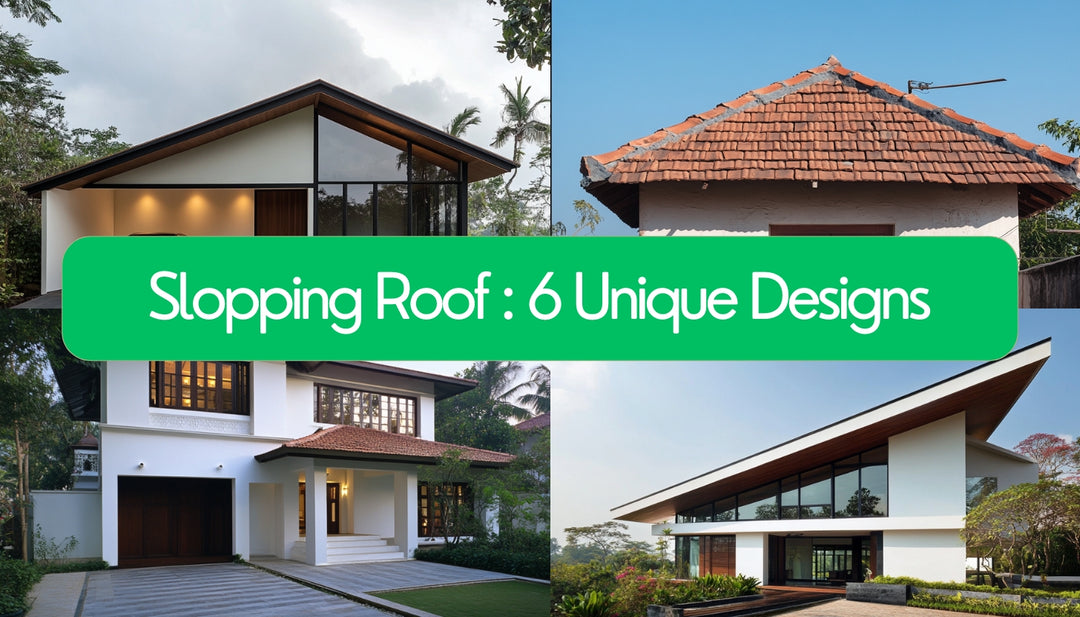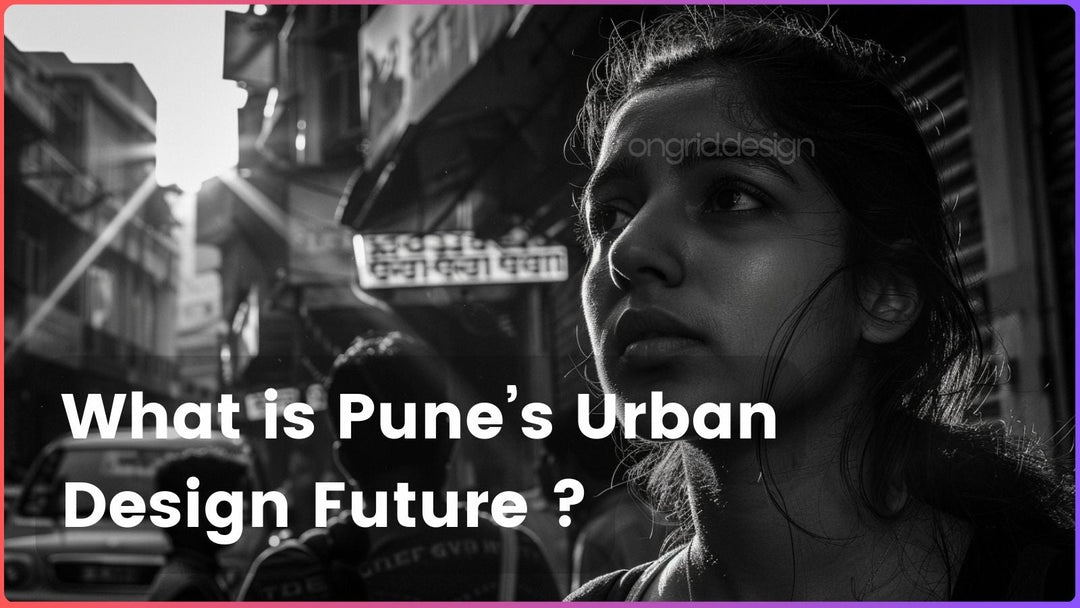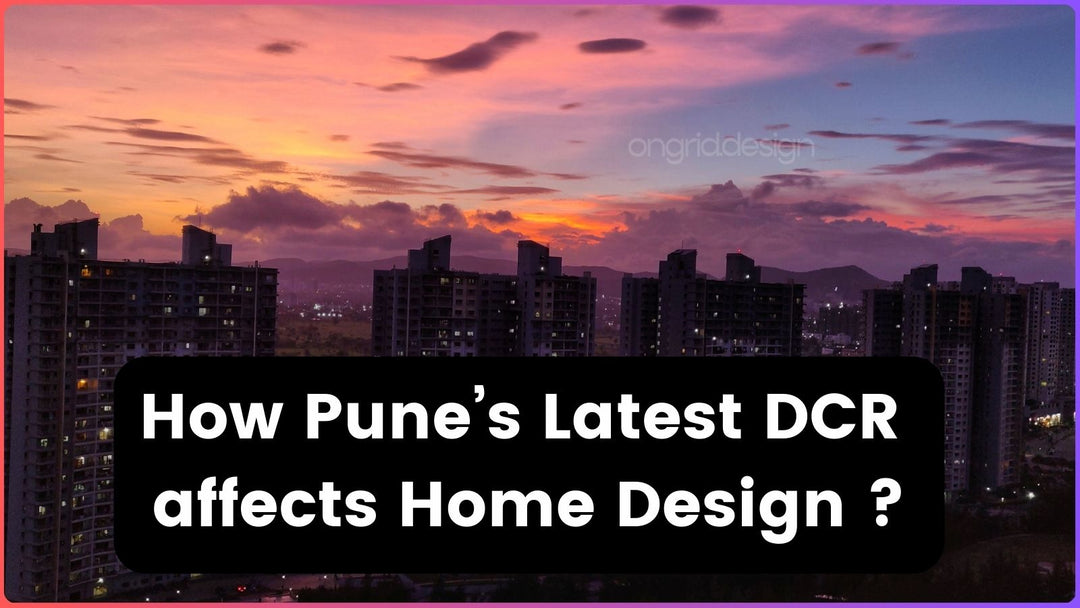5 Cities That Modernised Development Control Regulations: Lessons for Pune

Table of Contents
- Lessons for Pune
- Lessons for Pune
- Lessons for Pune
- Lessons for Pune
Introduction

As Pune continues to grow and evolve, the city faces numerous challenges regarding sustainable urban development, housing affordability, and quality of life. To address these challenges, architects, designers, and urban planners need to deeply understand the development control regulations (DCR) that shape the city's built environment. However, looking beyond Pune's borders and examining the DCRs of other major Indian cities can provide valuable insights and best practices that can be adapted to promote sustainable and compact urban development in Pune.
In this article, we will embark on a journey to compare and contrast the development control regulations of Pune with those of four other major Indian cities: Hyderabad, Bengaluru, Ahmedabad, and Delhi. By highlighting these cities' unique approaches and innovative strategies, we aim to identify valuable lessons that ongrid.design, a leading online architecture and interior design service provider based in Pune, can adopt to create more livable, sustainable, and people-centric urban spaces.
What are current Pune's Development Control Regulations?

Before delving into the DCRs of other cities, let us first examine the key features of Pune's own development control regulations. The Pune Municipal Corporation (PMC) has outlined a comprehensive set of DCRs in the Development Control and Promotion Regulations (DCPR) for the PMC area (Pune Municipal Corporation, 2013a).
Some of the notable aspects of Pune's DCRs include:
- Floor Space Index (FSI): Pune follows a zone-based FSI system, with different FSI limits for congested and non-congested areas. In congested areas, the maximum permissible FSI for residential development is 1.5, subject to a maximum tenement density of 375 tenements per hectare. In non-congested areas, the FSI ranges from 1 to 3.25, depending on the plot size and road width.
- Building height restrictions: The maximum building height in Pune is regulated based on the width of the abutting road. For instance, in congested areas, the maximum building height is limited to 70 metres, and the minimum setback from existing roads of 4.5 m width is 1.5 m.
- Transferable Development Rights (TDR): Pune has a well-established TDR system, which allows developers to transfer development rights from one area to another. TDR is generated when a landowner surrenders land for public purposes, such as road widening or reservation of public amenities. The TDR can be used to construct an additional built-up area in another location, subject to certain conditions.
- Parking requirements: Pune's DCRs specify minimum parking requirements for various land uses, such as residential, commercial, and institutional. The parking norms are based on the built-up area and the number of dwelling units, with additional provisions for visitor parking.
- Special zones and corridors: Pune's DCRs also include provisions for special zones and corridors, such as the metro corridor, where higher FSI and densities are permitted to encourage transit-oriented development (TOD).
While Pune's DCRs have evolved over time to address the city's changing needs, there is always room for improvement and learning from the experiences of other cities. Let us now turn our attention to the DCRs of Hyderabad, Bengaluru, Ahmedabad, and Delhi, and see what lessons they hold for Pune's architects and designers.
How Hyderabad’s Flexibility and Innovation lead to rapid urbanisation and lower housing costs?
Hyderabad, the capital city of Telangana, has undergone a remarkable transformation in recent years, emerging as a major hub for information technology and biotechnology. The city's development control regulations have played a crucial role in shaping its urban form and facilitating its growth.
One of the most striking features of Hyderabad's DCRs is the absence of FSI regulations (Munshi et al., 2014). In 2006, the state government of Andhra Pradesh (now Telangana) abolished FSI regulations through the G.O.Ms.No.86 legislation, replacing them with a system of building height and setback controls based on plot sizes and abutting road widths.
The rationale behind this move was to encourage vertical growth and optimise land utilisation while also providing greater flexibility to developers and architects in designing buildings. The removal of FSI regulations has significantly impacted Hyderabad's real estate market, making it one of the most affordable cities in India for housing (Munshi et al., 2014).
Another notable aspect of Hyderabad's DCRs is the emphasis on transit-oriented development (TOD) along major transport corridors, such as the Metro Rail and the Outer Ring Road (ORR). The DCRs allow for higher densities and mixed land uses within a 300m radius of metro stations and along the ORR, encouraging compact and walkable neighbourhoods that reduce dependence on private vehicles.
Hyderabad also employs a system of Transferable Development Rights (TDR) to incentivize the surrender of land for public purposes, such as road widening and heritage conservation. The TDR mechanism grants landowners additional development rights in the form of built-up area, which can be used on the same plot or transferred to another location (Munshi et al., 2014).

Lessons for Pune:
- Flexible building controls: While FSI regulations have their merits, Pune can explore the possibility of introducing more flexible building controls, such as height and setback regulations, to encourage vertical growth and optimise land utilisation.
- Affordable housing: Hyderabad's experience suggests that removing FSI restrictions can lead to more affordable housing options. Pune can consider selectively relaxing FSI norms in certain areas to promote the development of affordable housing projects.
- TOD along major corridors: Pune can take a cue from Hyderabad and actively promote ROD along its metro corridor and other major transport routes. By allowing higher densities and mixed land uses near transit nodes, Pune can create more sustainable and livable neighbourhoods.
Bengaluru: Balancing Growth and Sustainability
Bengaluru, the Silicon Valley of India, has emerged as one of the fastest-growing cities in the country, attracting a large number of IT professionals and entrepreneurs. However, this rapid growth has also brought with it numerous challenges, such as traffic congestion, environmental degradation, and strain on public infrastructure.
Bengaluru's development control regulations, outlined in the Revised Master Plan 2015, aim to strike a balance between accommodating the city's growth and ensuring sustainable development (Bangalore Development Authority, 2007b). One of the key features of Bengaluru's DCRs is the use of a Floor Area Ratio (FAR) system, which is similar to FSI.
The FAR regulations in Bengaluru vary according to the land use and the location of the plot within the city. For instance, in residential main areas, the maximum permissible FAR ranges from 1.75 to 3.25, depending on the plot size and road width. In commercial and industrial zones, the FAR is generally higher, ranging from 1.5 to 4.
Bengaluru's DCRs also include provisions for setbacks and building height restrictions based on the width of the abutting road. The setback requirements are designed to ensure adequate light, ventilation, and privacy for building occupants, as well as to create a sense of openness and visual appeal in the streetscape.
Another notable aspect of Bengaluru's DCRs is the emphasis on the preservation of open spaces and green areas. The master plan mandates the reservation of a certain percentage of land for parks, playgrounds, and other public amenities in each layout or subdivision. Developers are also required to maintain a minimum of 10-15% of the site area as open space, depending on the size of the plot.
Bengaluru has also introduced a system of TDR to incentivize the acquisition of land for public purposes. Under this system, landowners who surrender their land for road widening, parks, or other public amenities are granted development rights certificates (DRCs), which can be used to construct additional built-up areas on the same plot or transferred to another location.

Lessons for Pune:
- Contextual FAR regulations: Pune can consider adopting a more nuanced approach to FAR regulations, taking into account the specific context and character of different areas within the city. This can help ensure that the built form responds to the local environment and promotes a sense of place.
- Preservation of open spaces: Bengaluru's emphasis on preserving open spaces and green areas is a valuable lesson for Pune. By mandating the reservation of land for parks and public amenities, Pune can create a more livable and sustainable urban environment.
- TDR for public amenities: Pune can explore the possibility of expanding its TDR system to incentivize the acquisition of land for a wider range of public amenities, such as parks, playgrounds, and social infrastructure. This can help create more inclusive and equitable neighbourhoods.
Ahmedabad: Promoting Compact and Sustainable Growth
Ahmedabad, the largest city in Gujarat, has been at the forefront of urban planning and development in India. The city's development control regulations, outlined in the Comprehensive Development Plan 2021, reflect a strong commitment to promoting compact and sustainable growth (Ahmedabad Urban Development Authority, 2013c).
One of the key features of Ahmedabad's DCRs is the use of a variable FSI system to encourage the development of a particular type of growth in specified areas. For instance, the DCRs allow for higher FSI in the central business district (CBD) and along transit corridors, such as the Bus Rapid Transit System (BRTS) and the proposed Metro Rail, to promote high-density, mixed-use development.
In the CBD, the maximum permissible FSI has been increased from 1.8 to 5.4, to encourage the redevelopment of existing structures and optimise land utilisation. Similarly, in the Transit-Oriented Zone (TOZ) along the BRTS and Metro corridors, the FSI has been increased to 4.0 to promote compact and walkable neighbourhoods.
Ahmedabad's DCRs also include provisions for the Residential Affordable Housing (RAH) zone, a 1 km strip along the outer side of the SP Ring Road. In this zone, developers are incentivised to construct affordable housing units by providing additional FSI at discounted rates. This helps ensure that development benefits are accessible to a wider society.
Another notable aspect of Ahmedabad's DCRs is the emphasis on preserving heritage and creating public spaces. The DCRs provide for the conservation of heritage structures and precincts through the use of TDR incentives. Developers who maintain heritage buildings are granted additional FSI in the form of TDR, which can be used on the same plot or transferred to another location.
The DCRs also mandate the provision of open spaces and public amenities in each development based on the size of the plot and the proposed land use. Developers must provide a minimum of 10-20% of the plot area as open space, which can include parks, playgrounds, and green areas.

Lessons for Pune:
- Variable FSI for specific areas: Pune can consider adopting a variable FSI system, similar to Ahmedabad, to encourage specific types of development in different parts of the city. For instance, higher FSI along transit corridors can promote TOD and reduce dependence on private vehicles.
- Affordable housing incentives: Pune can take a cue from Ahmedabad's RAH zone and explore the possibility of providing incentives for the development of affordable housing projects in certain areas of the city. This can help address the housing needs of low and middle-income groups.
- Heritage conservation through TDR: Pune has a rich cultural and architectural heritage, and the city can learn from Ahmedabad's approach to heritage conservation through the use of TDR incentives. By granting additional FSI to developers who maintain heritage structures, Pune can encourage the preservation of its built heritage.
Delhi: Integrating Land Use and Transportation Planning
Delhi, the capital city of India, has a unique administrative setup, with multiple agencies involved in the planning and development process. The Delhi Development Authority (DDA) is responsible for the preparation of the Master Plan for Delhi, which guides the city's growth and development.
The Master Plan for Delhi 2021 strongly emphasizes the integration of land use and transportation planning to create a more sustainable and livable city (Delhi Development Authority, 2007). One of the key features of Delhi's DCRs is the designation of a hierarchy of commercial centres, ranging from local shopping centres to district centres and the central business district.
The DCRs allow for higher FSI and building heights in the commercial centres, to promote mixed-use development and reduce the need for long-distance travel. For instance, in the central business district, the maximum permissible FSI is 2.0, with additional FSI of up to 4.0 allowed for specific uses, such as hotels and service apartments.
Delhi's DCRs also include provisions for Transit-Oriented Development (TOD) along the Metro Rail corridors. The TOD policy aims to create compact, mixed-use, and pedestrian-friendly neighbourhoods within a 500-800m radius of metro stations. The DCRs allow for higher densities and building heights in the TOD zones, to encourage the use of public transport and reduce dependence on private vehicles.
Another notable aspect of Delhi's DCRs is the emphasis on the provision of affordable housing and social infrastructure. The Master Plan mandates the reservation of a certain percentage of land for Economically Weaker Sections (EWS) and Low-Income Groups (LIG) in each new development. Developers are required to construct a minimum of 15% of the total residential units as EWS/LIG housing, with a maximum unit size of 30-60 sqm.
The DCRs also include provisions for the development of social infrastructure, such as schools, healthcare facilities, and community centres, based on each area's population and land use. Developers are required to provide space for social infrastructure as part of their projects or pay a development fee to the local authority for the construction of such facilities.

Lessons for Pune:
- Hierarchy of commercial centres: Pune can consider adopting a hierarchy of commercial centres, similar to Delhi, to promote mixed-use development and reduce the need for long-distance travel. Pune can create more vibrant and self-sufficient neighbourhoods by allowing higher FSI and building heights in designated commercial areas.
- TOD along metro corridors: Delhi's TOD policy can serve as a useful model for Pune, as the city looks to promote sustainable growth along its upcoming metro corridors. Pune can create more walkable and transit-oriented neighbourhoods by encouraging higher densities and mixed land uses near metro stations.
- Affordable housing and social infrastructure: Pune can learn from Delhi's approach to affordable housing and social infrastructure provision by mandating the inclusion of EWS/LIG units in new developments and requiring developers to contribute to constructing schools, healthcare facilities, and community centres.
The Way Forward for Pune

Having examined the development control regulations of Hyderabad, Bengaluru, Ahmedabad, and Delhi, it is evident that each city has adopted unique approaches and strategies to promote sustainable and compact urban development. While Pune's DCRs have evolved to address the city's changing needs, there is always room for improvement and learning from the experiences of other cities.
As Pune looks to the future, architects, designers, and urban planners need to critically analyse the city's DCRs and identify areas where best practices from other cities can be adapted and incorporated. Some of the key lessons that ongrid.design can take away from this comparative analysis include:
- Flexible and context-specific building controls: Pune can explore the possibility of introducing more flexible building controls, such as height and setback regulations, in certain city areas, to encourage vertical growth and optimise land utilisation. At the same time, it is important to ensure that the regulations respond to the specific context and character of each neighbourhood.
- Incentivizing affordable housing: Pune can consider providing incentives for the development of affordable housing projects, such as additional FSI at discounted rates, to address the housing needs of low and middle-income groups. This can help create a more inclusive and equitable city.
- TOD along transit corridors: Pune should actively promote ROD along its upcoming metro corridor and other major transport routes, by allowing higher densities and mixed land uses near transit nodes. This can help create more sustainable and livable neighbourhoods that reduce dependence on private vehicles.
- Heritage conservation through TDR: Pune can learn from Ahmedabad's approach to heritage conservation through the use of TDR incentives, by granting additional FSI to developers who maintain heritage structures. This can help preserve the city's rich cultural and architectural heritage.
- Integration of land use and transportation planning: Pune can take a cue from Delhi's approach to integrating land use and transportation planning, by promoting mixed-use development and encouraging the use of public transport. This can help create a more sustainable and efficient urban form.
At ongrid.design, we are committed to staying at the forefront of urban planning and design best practices, and to working closely with our clients to create sustainable, livable, and people-centric spaces. By leveraging the lessons learned from other cities and adapting them to Pune's unique context, we believe that we can contribute to the creation of a more resilient, equitable, and vibrant city.
Conclusion

In conclusion, the comparative analysis of development control regulations in Hyderabad, Bengaluru, Ahmedabad, and Delhi has highlighted a range of innovative approaches and strategies that Pune can learn from and adapt to promote sustainable and compact urban development. From Hyderabad's flexible building controls and emphasis on affordable housing, to Bengaluru's focus on preserving open spaces and promoting TDR for public amenities, each city has valuable lessons to offer.
Ahmedabad's variable FSI system and incentives for affordable housing and heritage conservation, as well as Delhi's integration of land use and transportation planning and provisions for social infrastructure, also provide useful models for Pune to consider. By critically examining these best practices and adapting them to Pune's specific context, architects, designers, and urban planners can help shape a more livable, equitable, and sustainable future for the city.
At ongrid.design, we are committed to staying at the cutting edge of urban planning and design, and to working closely with our clients to create spaces that promote the well-being of both people and the planet. By leveraging the lessons learned from other cities and combining them with our own expertise and innovative approach, we believe that we can make a meaningful contribution to Pune's urban transformation.
However, it is important to recognize that the adoption of new planning approaches and strategies is not a one-size-fits-all solution. Each city has its own unique challenges, opportunities, and local context that must be carefully considered. What works well in one city may not necessarily be applicable or effective in another.
Therefore, as Pune looks to incorporate best practices from other cities, it is crucial to engage in a participatory and inclusive planning process that involves all stakeholders, including local communities, government agencies, and private sector actors. We can develop a shared vision and roadmap for Pune's sustainable and equitable growth by working together and considering multiple perspectives.

Moreover, successfully implementing new planning approaches and strategies will require a strong political will, effective governance mechanisms, and adequate financial resources. The Pune Municipal Corporation (PMC) and other relevant authorities will need to demonstrate leadership and commitment in driving the necessary policy changes and investments to support sustainable urban development.
In this context, the role of architects, designers, and urban planners becomes even more critical. As professionals who shape the built environment, we have a responsibility to advocate for sustainable and people-centric planning practices, and to work closely with policymakers and other stakeholders to translate vision into reality.
At ongrid.design, we are committed to being a partner and catalyst for change in Pune's urban transformation journey. By bringing together creativity, technical expertise, and a deep understanding of the local context, we strive to create spaces that not only meet the needs of our clients but also contribute to the broader goals of sustainability, equity, and livability.
As Pune stands at the threshold of a new era of urban development, let us seize the opportunity to learn from the successes and challenges of other cities, and to chart a course towards a more sustainable, resilient, and inclusive future. By working together and leveraging the power of innovative planning and design, we can help Pune become a model for sustainable urbanisation in India and beyond.
References:
- Ahmedabad Urban Development Authority (2013c). Comprehensive Development Plan 2021 (Second Revised) Part 3: General Development Regulations, Ahmedabad Urban Development Authority, Ahmedabad.
- Bangalore Development Authority (2007b). Revised Master Plan 2015 (Volume 3), Bangalore Development Authority, Bangalore.
- Delhi Development Authority (2007). Master Plan for Delhi 2021, Delhi Development Authority, New Delhi.
- Munshi, T. G., Joshi, R., Adhvaryu, B., Joseph, Y., Shah, K., & Christian, P. (2014). Development Plan Preparation in Indian Cities: An Inquiry into Sustainability of Local Areas in Five Million-Plus Cities. Centre for Urban Land Policy, CEPT University, Ahmedabad.
- Pune Municipal Corporation (2013a). Draft Development Plan for Pune City (Old Limit) 2007-2027, Pune Municipal Corporation, Pune.











Leave a comment